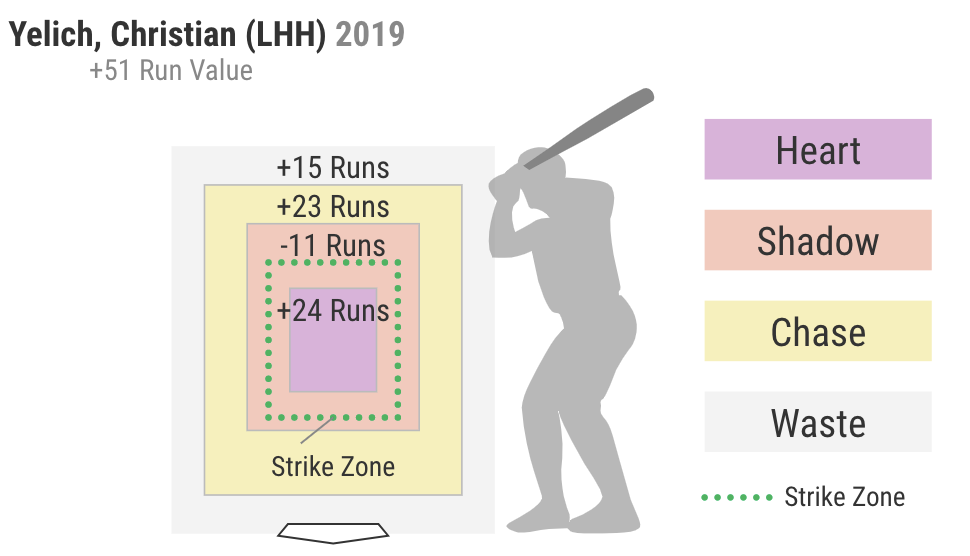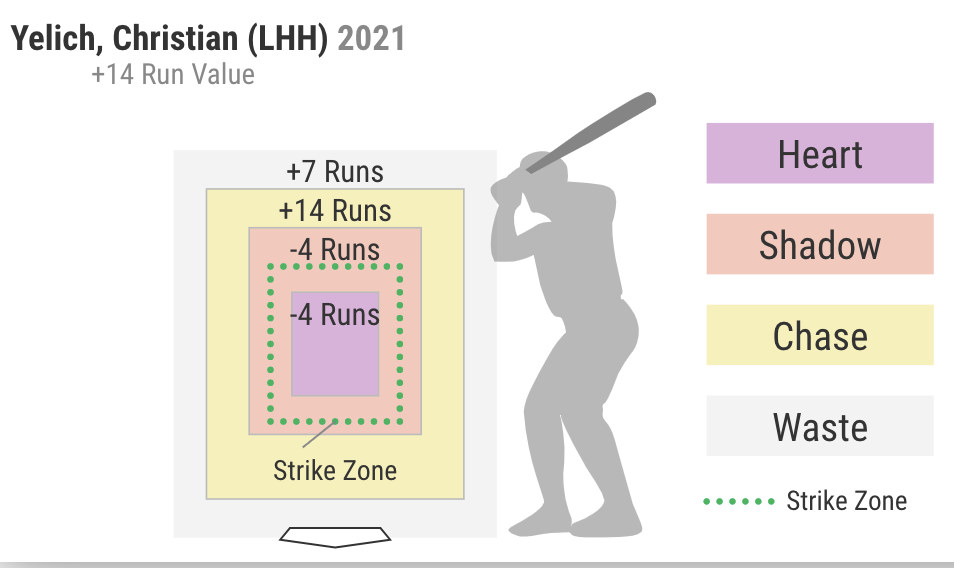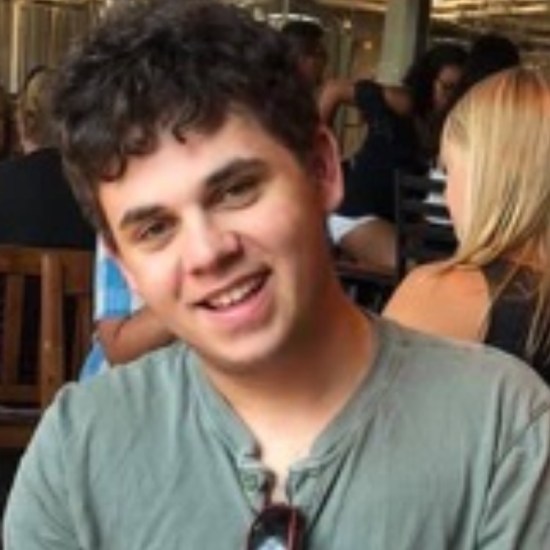Christian Yelich seemingly found a new groove after being acquired by Milwaukee during the 2017-2018 offseason. He had always been a good player with Miami, but his first two seasons as a Brewer were MVP-level. Since 2019, however, his play has declined.
He has quickly reverted back to the player he was with the Marlins from a production standpoint. Many argued — validly, considering the information we had at the time — that 2020 was a heavily noisy down year for the 2018 National League Most Valuable Player. A bad 247-PA stretch is not out of the realm of possibility for any player, and a 113 wRC+ is far from bad. It didn’t stop him from demanding a late first-/early second-round ADP leading into the 2021 season. Unfortunately, Yelich has carried his “struggles” over to this season, making them now impossible to ignore. Has he always been a good, but not great, player? A player of that caliber does not perform at an MVP level for two full seasons by some random fluke. But we are starting to see more evidence that he may not be one of MLB’s more premier superstars like he inarguably was following the 2019 season.
Still Elite at Many Things
On quick glance at Yelich’s Baseball Savant page, you may notice a lot of red. Let this be a reminder that we shouldn’t use Baseball Savant sliders as our sole analysis of a player. Many of them are redundant and hence don’t give you any new information about the player. Also, this tells us Yelich still has the tools to be an elite hitter.
Surprisingly, Yelich’s plate discipline has gotten better over the years. His 19.7% walk rate ranks third among hitters with at least 200 PA, trailing just Yasmani Grandal and Joey Gallo. His chase rate currently ranks in the 97th percentile of the league. We are not accustomed to seeing these numbers out of Yelich, even during his elite seasons.
Additionally, he has continued to hit the ball hard on a consistent basis. This is nothing new, as Yelich has ranked in the top 10% of the league in HH% every year of the Statcast era. In fact, 2020 and 2021 have been his two best seasons in terms of hard hit rate. His 90th percentile exit velocity, 105.4, is among the better hitters in the league, although it has come down a bit from when he was at his best. The biggest problem with Yelich’s quality of contact has been his launch angle, not exit velocity.
Opponent Adjustments
A few weeks ago, Justin Choi wrote about Yelich and his issues so far this season. He explains that pitchers have been challenging Yelich with pitches in the zone, specifically when they are ahead in the count, much more frequently than previous years. This makes logical sense, as Yelich has clearly proved that he’s not going to swing at pitches out of the zone too often. His chase rate on two-strike counts this season is just 20.1% — only Trent Grisham and Clint Frazier have done better. As much as it makes his high walk rate more impressive, it also raises cause for concern.
Another adjustment opposing teams have made against Yelich is their frequency to shift. Prior to 2019, he was shifted against less than 2 percent of the time. Although Yelich has never been known as a pull hitter, that number has gradually climbed to a ratio higher than 50% in 2021
It is worth noting that Yelich’s performance has gone down both with and without the shift. Thus, we can assume the shift has not been the biggest cause of his struggles at the plate. Besides, if he’s hitting it over everyone, does it really matter how the infield is positioned? And that’s been his biggest issue this season.
Where has the Power Gone?
Finally, we get to the biggest issue at hand: Yelich’s major decline in power. Notice how I previously mentioned his impressively high hard hit rate but nothing about barrels. Well, he is not lifting the ball enough, which you’d probably expect given that information. Yelich has never really been a fly ball hitter. His 28.1% fly ball rate in 2019 seems like an outlier, as it has been under 20% every other year of his career. This year, however, his fly ball rate is above 20% against both breaking balls and offspeed pitches, which is actually an improvement from 2020. So that leaves us with the pitch Yelich is having the most trouble against: fastballs.
From 2018-2020, Yelich carried a 2.0 RV/100 rate against 4-seam fastballs. That ratio has climbed down to just 0.6 in 2021. Bringing this back to Justin’s findings, these flaws have been primarily apparent on pitches down the heart of the plate. In 2018, Yelich posted a .596 xwOBAcon against fastballs in the heart of the plate. The following year, it was .580 against such pitches. This year, his xwOBAcon is just .390 against the most favorable pitches a hitter could see. You could see the differences between these two swing-take profiles, one from 2019, the other from 2021.


It is very concerning to see someone have negative “swing runs” against pitches in the heart of the zone, as Yelich has done in 2021. Additionally, he has taken a higher proportion of pitches in this area. This is likely a result of his improved plate discipline; his Swing% has come down from 45.2% in 2019 to 37.7% in 2021, despite a higher Zone%. It is not a big deal to see him take more strikes closer to the edge of the zone, considering it will lead to significantly more walks. However, the pitches down the middle are the ones he should be doing the most damage to. Otherwise, pitchers can easily adjust, which they clearly have.
Looking Forward
Usually, when you see a player underperforming his preseason expectation, you look at various metrics that may signal regression is coming. Unfortunately for Christian Yelich, those don’t help him. A Yelich resurgence would give a massive boost to the Brewers, who, despite holding a commanding lead over the rest of the NL Central, have struggled offensively this season. Maybe he was the product of juiced balls. Maybe pitchers have figured out how to attack him. Either way, I’m legitimately concerned about Yelich’s chances of returning to some resemblance of his MVP-level performance.
This isn’t to say Yelich is a bad player. He is still an above-average hitter and the most important position player on his team. However, if you drafted him in fantasy, you were expecting great, not good. Hopefully, he will start to heat up eventually and prove all of this was a fluke. However, we may just have to accept the fact that he’s not an elite player anymore.
Photo by Nick Wosika/Icon Sportswire | Adapted by Doug Carlin (@Bdougals on Twitter)


Having had Yelich every year but 1 since 2015, I’ve watched a lot of him over the years including this year. I’m repeating the article when I say he misses way too many pitches down the middle, stuff he would have crushed in 2018-19.
I kind of wonder if the kneecap injury in 2019 is having some lingering affect. You can draw a pretty clear and sharp line since that ended his 2019:
– 2018-19: .431 wOBA, won one MVP and a 2nd place finish
– 2020-21: .346 wOBA, no AS team and probably no longer the best hitter on his team (If you believe Adames is for real)
Remember Belli vs Yelli debate? I’d still take Yelli. Something seems very wrong with Bellinger. (article fodder?)